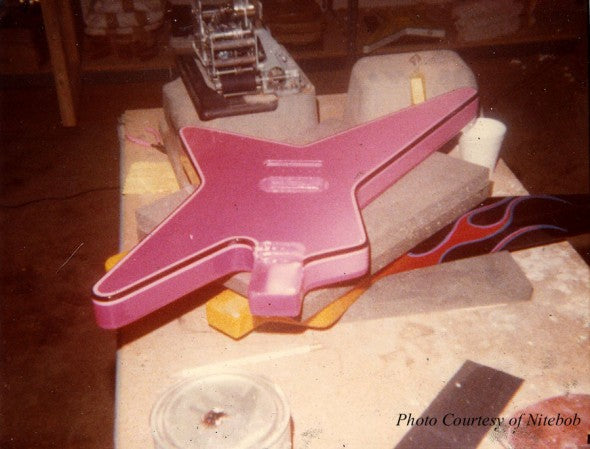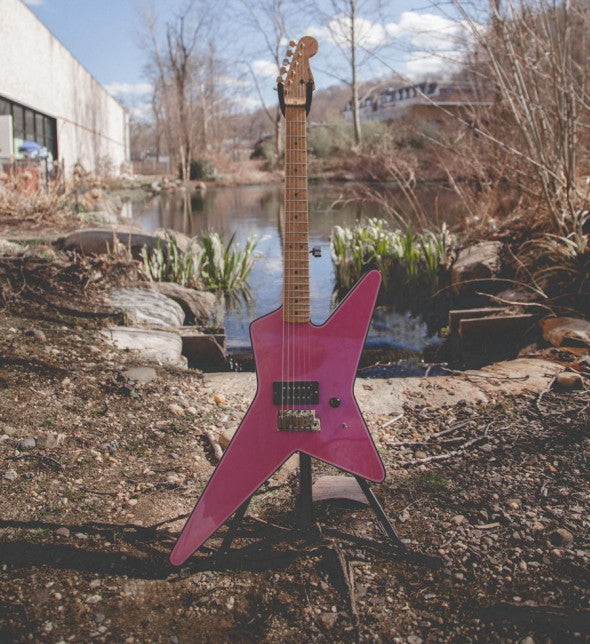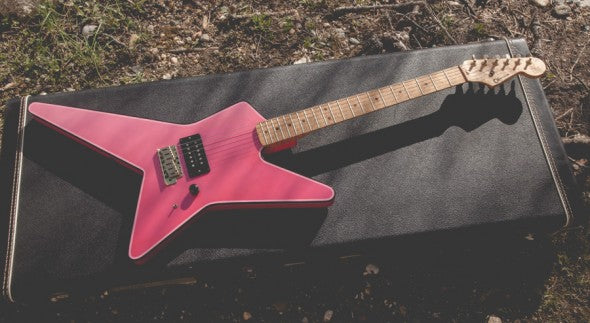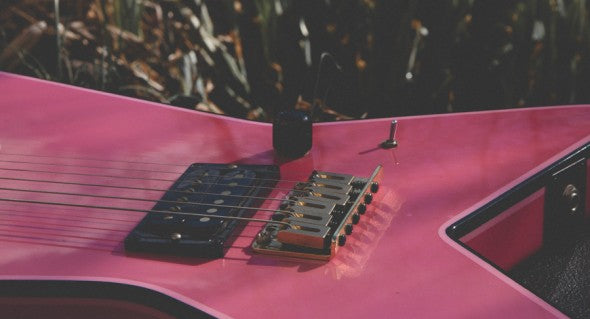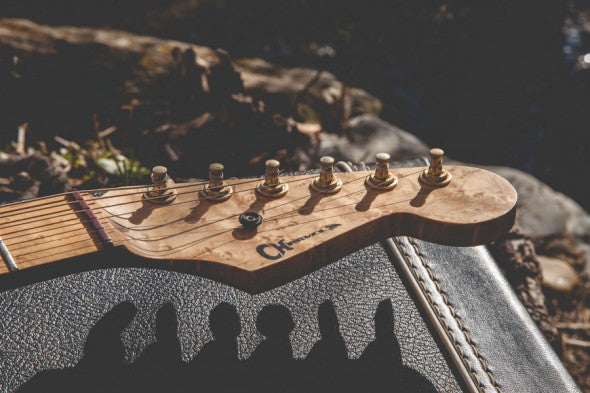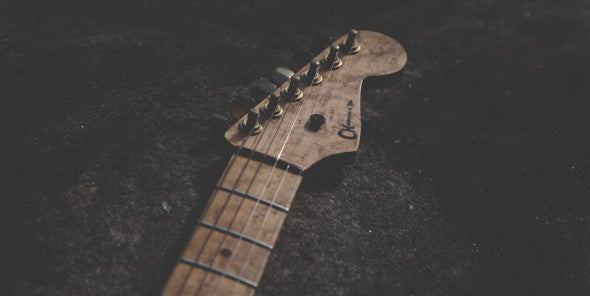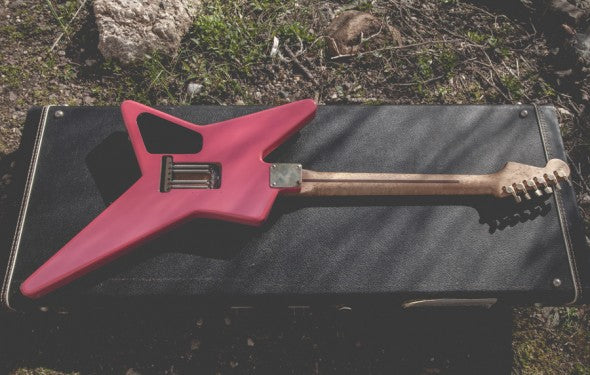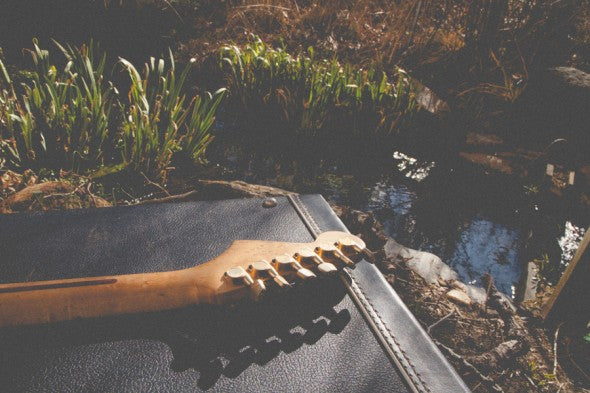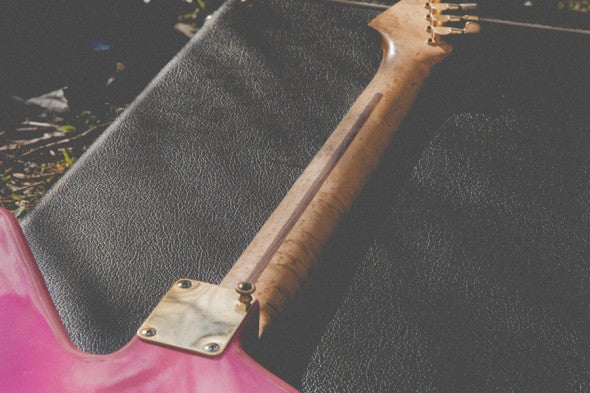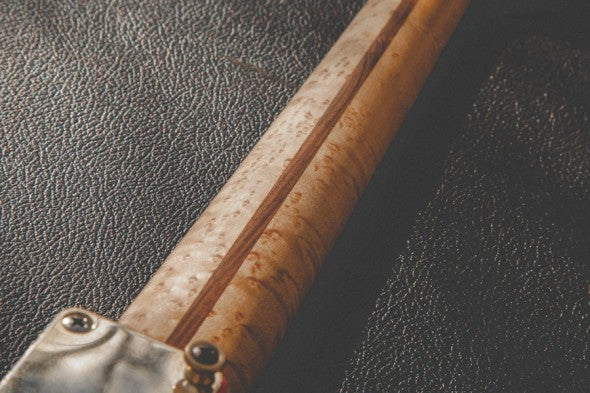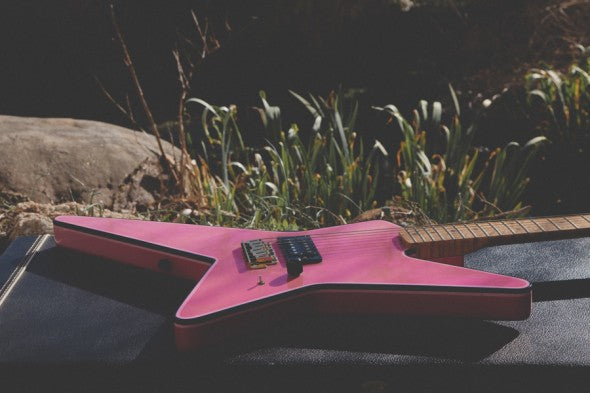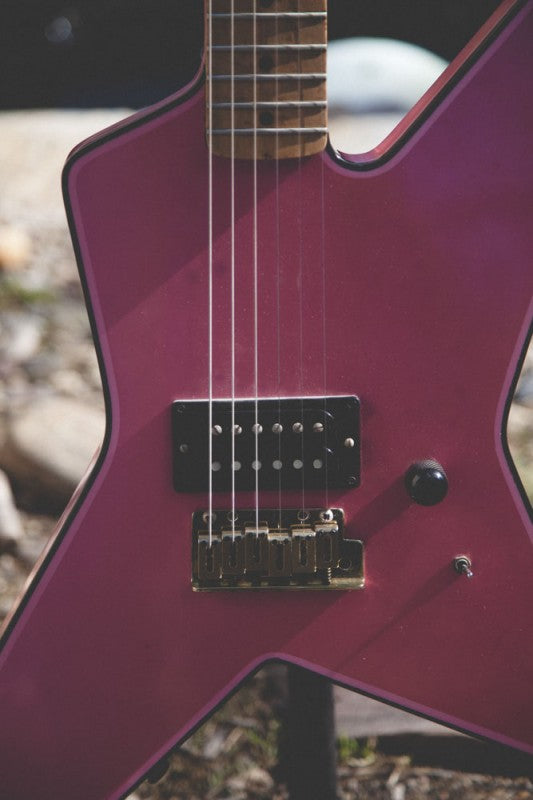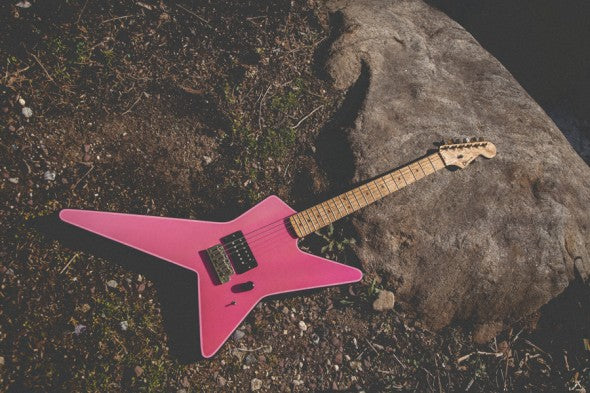Out Of The Case: Charvel Star Nitebob Guitar
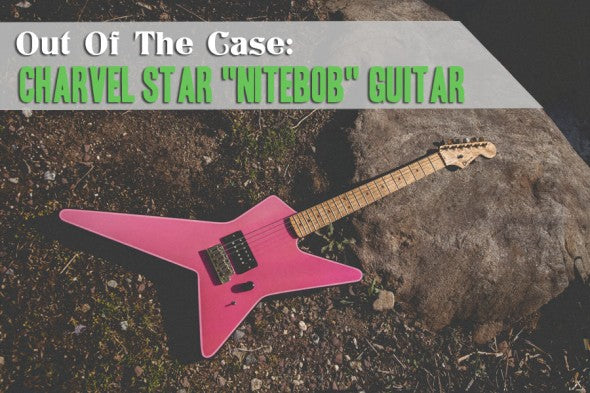
When you wish upon a star, dreams will take you back to the big ‘80s, when every other metal guy seemed to be flaunting a star-shaped guitar or some variation thereof. It shouldn’t be surprising that we’ve got one of the original star-shaped guitars here at the Zoo, property of Zookeeper Tommy Colletti, and it’s a classic example of a time and place—a less complicated era in the metal guitar universe when amps merely went to 11, preamps had only three tubes, and most guitars had only six strings.
So, when we say “original star guitar,” we’re referring to a Charvel Star, manufactured during the company’s late ‘70s/early ‘80s “golden age.” For the purpose of clarification, we’ll mention that Charvel was originally founded and owned 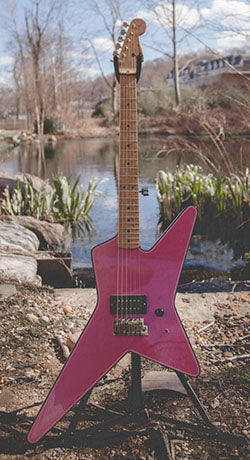 by Wayne Charvel in the early 1970s, and it had existed for years as a replacement guitar parts company that supplied necks and bodies to other companies and touring musicians. The company’s business model changed due to competition from overseas manufacturers, whereupon it become a manufacturer of finished guitars that first bore the familiar Charvel logo.
by Wayne Charvel in the early 1970s, and it had existed for years as a replacement guitar parts company that supplied necks and bodies to other companies and touring musicians. The company’s business model changed due to competition from overseas manufacturers, whereupon it become a manufacturer of finished guitars that first bore the familiar Charvel logo.
That’s when Grover Jackson entered the picture. Jackson bought Charvel in 1978 and he continued building necks and bodies for companies such as Music Man, DiMarzio, and B.C. Rich, yet he also went full-tilt making and marketing the custom, hand-built early Charvel guitars that are today so revered and sought out, including those Stars. According to Mike Eldred, the longtime manager of Fender’s Custom Shop and Grover Jackson’s first employee upon taking over Charvel back in ‘78, “The Star shape is the brainchild of Grover Jackson”.
Nonetheless, it’s interesting to note that Eddie Van Halen appeared on the cover of Van Halen’s 1980 album Women and Children First with the highly modified Ibanez Destroyer that he took a drill to and thereby redesigned the landscape of the body to resemble what is essentially a star-shaped body—possibly in the late ‘70s. We spoke with Michael Charvel, son of Wayne Charvel and with his father the co-founder of Wayne Guitars, who offered some very interesting perspective about how the star shape may have been born. “Ed would often come in to the old [Charvel] shop to visit my father”, recalled Michael, “and at one point he had brought his new hacked up Destroyer into the shop. Eddie was a tinkerer and [the Ibanez’s drilled-not-sawed “redesign”] was a very rough job so my Dad decided to build a refined version for him. In fact one of those star guitars was played on tour and had a Danelectro neck.” Just like the mutilated Ibanez.
Meanwhile, our particular Charvel Star has its own unique backstory. It was a custom order for Nitebob, the legendary New York-based guitar technician/touring sound engineer/ guitar builder 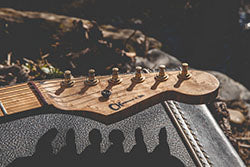 and a sort of rock and roll hero in his Downtown NYC stomping grounds and beyond. Nitebob’s career as a touring sound engineer reaches back to tours in the early ‘70s with the Emerson, Lake, and Palmer before ending up with the circus known as the New York Dolls. When the Doll’s famously imploded, a young band called Aerosmith was getting ready to get their wings and then some, leading to an association with the band that continues today. It’s worth noting that Nitebob’s career has found him working with a huge range of bands and artists, from out-and-out rockers like the Aerosmith, Kiss, Hanoi Rocks, and Faster Pussycat, to tours with the more sonically sophisticated Steely Dan, whose unique blending of genres, vocals, and instrumentation requires a talented, audiophile-like engineer for their concerts and ultimately, serves as testimony to Nitebob’s “golden ears” behind the soundboard.
and a sort of rock and roll hero in his Downtown NYC stomping grounds and beyond. Nitebob’s career as a touring sound engineer reaches back to tours in the early ‘70s with the Emerson, Lake, and Palmer before ending up with the circus known as the New York Dolls. When the Doll’s famously imploded, a young band called Aerosmith was getting ready to get their wings and then some, leading to an association with the band that continues today. It’s worth noting that Nitebob’s career has found him working with a huge range of bands and artists, from out-and-out rockers like the Aerosmith, Kiss, Hanoi Rocks, and Faster Pussycat, to tours with the more sonically sophisticated Steely Dan, whose unique blending of genres, vocals, and instrumentation requires a talented, audiophile-like engineer for their concerts and ultimately, serves as testimony to Nitebob’s “golden ears” behind the soundboard.
About the guitar: “I had been doing business with Charvel since 1975,” Nitebob recalls, “and I had the guitar built along with a matching V.” It was Mike Eldred who built those guitars for Nitebob sometime around 1979 or 1980. Eldred 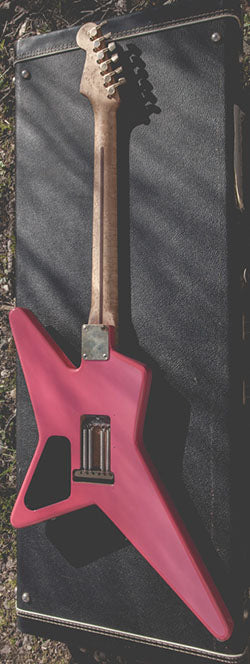 recounted for us some of the unique—if not outright peculiar—manufacturing techniques used in making the Star. “The binding was created by making a route about a quarter-inch into the body, where the binding would normally go,” explains Eldred, “And then filling that route, or channel, with a liquid epoxy.” Nitebob’s guitar also featured a phenolic nut (that’s the material often used as circuit boards), a bird’s-eye maple neck, a DiMarzio pickup, a Gotoh tremolo bridge and Gotoh “crown” tuners.”
recounted for us some of the unique—if not outright peculiar—manufacturing techniques used in making the Star. “The binding was created by making a route about a quarter-inch into the body, where the binding would normally go,” explains Eldred, “And then filling that route, or channel, with a liquid epoxy.” Nitebob’s guitar also featured a phenolic nut (that’s the material often used as circuit boards), a bird’s-eye maple neck, a DiMarzio pickup, a Gotoh tremolo bridge and Gotoh “crown” tuners.”
Of course, the Charvel Star would become a very copied instrument throughout guitardom, with such manufacturers as ESP, Dean, and B.C. Rich all adding their own stars into the six-string constellation. Players include Chris Holmes of W.A.S.P (who would literally eat his guitar onstage), Gus G. (using a signature ESP version), as well as Stryper and many, many more. As for Nitebob, he’s writing a lurid memoir about life as a touring sound technician, and the many sights, sounds, and smells, not to mention characters he’s encountered throughout the decades.
Written by: Mike Bieber
Additional Contribution: Tommy Colletti
Photos: Walter Bryant
Enjoy this photo set which includes an original image of the guitar in production:
